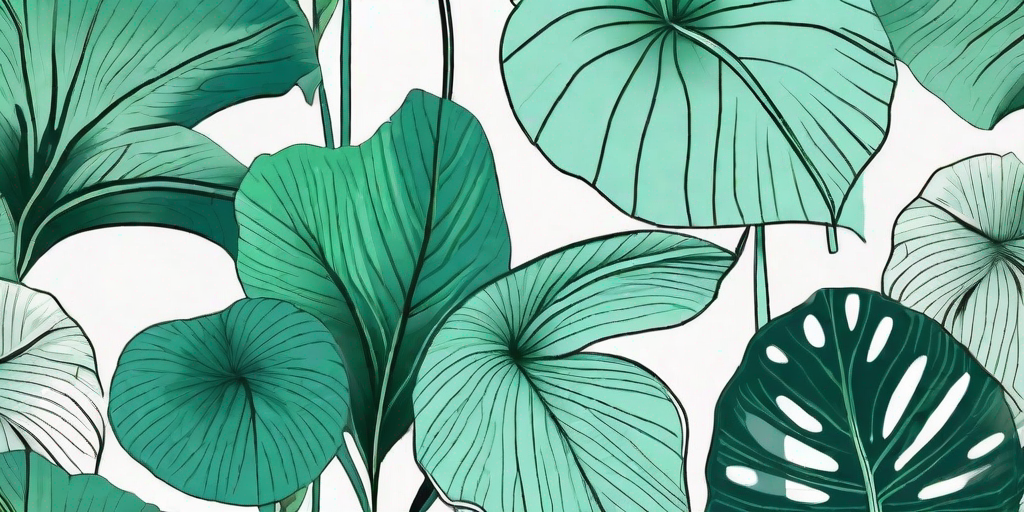
Welcome, green-thumbed enthusiasts and curious readers alike! Today, we're diving trunk-first into the world of elephant ear plants. These leafy wonders, known for their large, ear-shaped foliage, are a favorite among gardeners and plant lovers worldwide. But did you know there's more than just one type of elephant ear plant? Oh, yes! So, buckle up, plant lovers, because we're about to embark on a leafy journey of epic proportions.
The Elephant in the Room: What are Elephant Ear Plants?
Elephant ear plants, scientifically known as the Alocasia, Colocasia, and Xanthosoma genera, are tropical perennials known for their large, heart-shaped leaves. They are native to parts of Asia and the Americas, but their striking appearance has made them a popular choice for gardens and homes around the world.
Despite their name, elephant ear plants are not a favorite snack for elephants. The name comes from the shape of their leaves, which resemble the ears of an elephant. However, these plants are far from being all ears. They come in a variety of colors, sizes, and types, each with its own unique characteristics and care requirements.
Types of Elephant Ear Plants
There are over 70 species of elephant ear plants, but we'll focus on the most popular ones. Each of these species has its own unique characteristics, making them a great addition to any garden or home.
1. Alocasia
The Alocasia genus is home to some of the most stunning varieties of elephant ear plants. These plants are known for their glossy, dark green leaves and striking white veins. Some popular varieties include the Alocasia Amazonica, also known as the African Mask plant, and the Alocasia Macrorrhizos, also known as the Giant Taro.
Alocasias prefer a humid environment and indirect sunlight. They can be a bit finicky when it comes to watering, requiring a delicate balance of not too much, but not too little. But with a bit of patience and care, these plants can grow to be quite large, making a dramatic statement in any space.
2. Colocasia
Colocasia, also known as Taro, is another popular type of elephant ear plant. Unlike Alocasias, which have their leaves pointing upwards, Colocasias have their leaves pointing downwards, giving them a more relaxed, laid-back appearance.
Colocasias are also less picky when it comes to their environment. They can tolerate a wider range of lighting conditions and are more forgiving when it comes to watering. Some popular varieties include the Colocasia Esculenta, also known as the Black Magic, and the Colocasia Gigantea, also known as the Giant Elephant Ear.
3. Xanthosoma
Last but not least, we have the Xanthosoma genus. These plants are known for their lush, velvety leaves and can grow to be quite large. Some popular varieties include the Xanthosoma Sagittifolium, also known as the Arrow Leaf Elephant Ear, and the Xanthosoma Violaceum, also known as the Blue Taro.
Xanthosomas prefer a humid environment and indirect sunlight, much like Alocasias. However, they are more tolerant of different soil types, making them a great choice for those who are new to the world of elephant ear plants.
How to Care for Your Elephant Ear Plant
Now that we've covered the different types of elephant ear plants, let's talk about how to care for them. While each type has its own specific care requirements, there are some general guidelines that apply to all elephant ear plants.
Lighting
Elephant ear plants prefer indirect sunlight. Too much direct sunlight can cause their leaves to burn, while too little light can cause their growth to slow down. A spot near a north or east-facing window is ideal.
Watering
When it comes to watering, elephant ear plants prefer their soil to be consistently moist, but not waterlogged. Overwatering can lead to root rot, while underwatering can cause their leaves to droop. A good rule of thumb is to water your plant when the top inch of soil feels dry to the touch.
Humidity
As tropical plants, elephant ear plants love humidity. If your home is on the drier side, consider placing your plant on a tray filled with pebbles and water, or using a humidifier to increase the humidity levels.
Frequently Asked Questions
Are elephant ear plants toxic?
Yes, elephant ear plants are toxic if ingested. They contain calcium oxalate crystals, which can cause irritation and swelling of the mouth and throat. Keep these plants out of reach of pets and children.
Can elephant ear plants grow indoors?
Yes, elephant ear plants can grow indoors, as long as they receive enough light and humidity. They make a great addition to any indoor garden or living space.
How fast do elephant ear plants grow?
With the right care and conditions, elephant ear plants can grow quite fast. Some varieties can grow up to 6 feet in a single growing season!
Conclusion
There you have it, folks! A comprehensive guide to the different types of elephant ear plants. Whether you're a seasoned gardener or a newbie plant parent, these leafy wonders are sure to bring a touch of the tropics to your home or garden. So go on, give these ear-resistible plants a try. You won't be disappointed!















